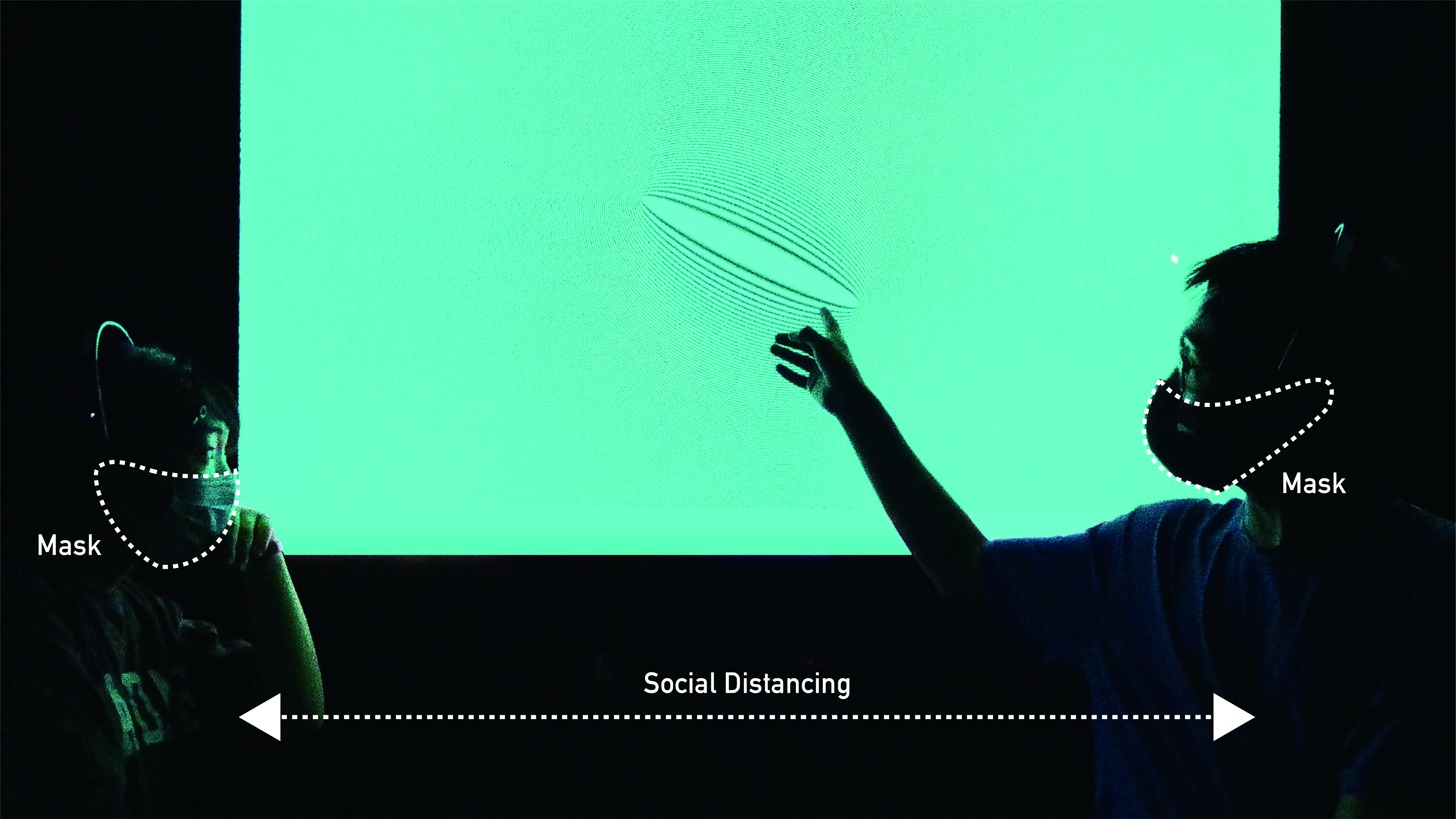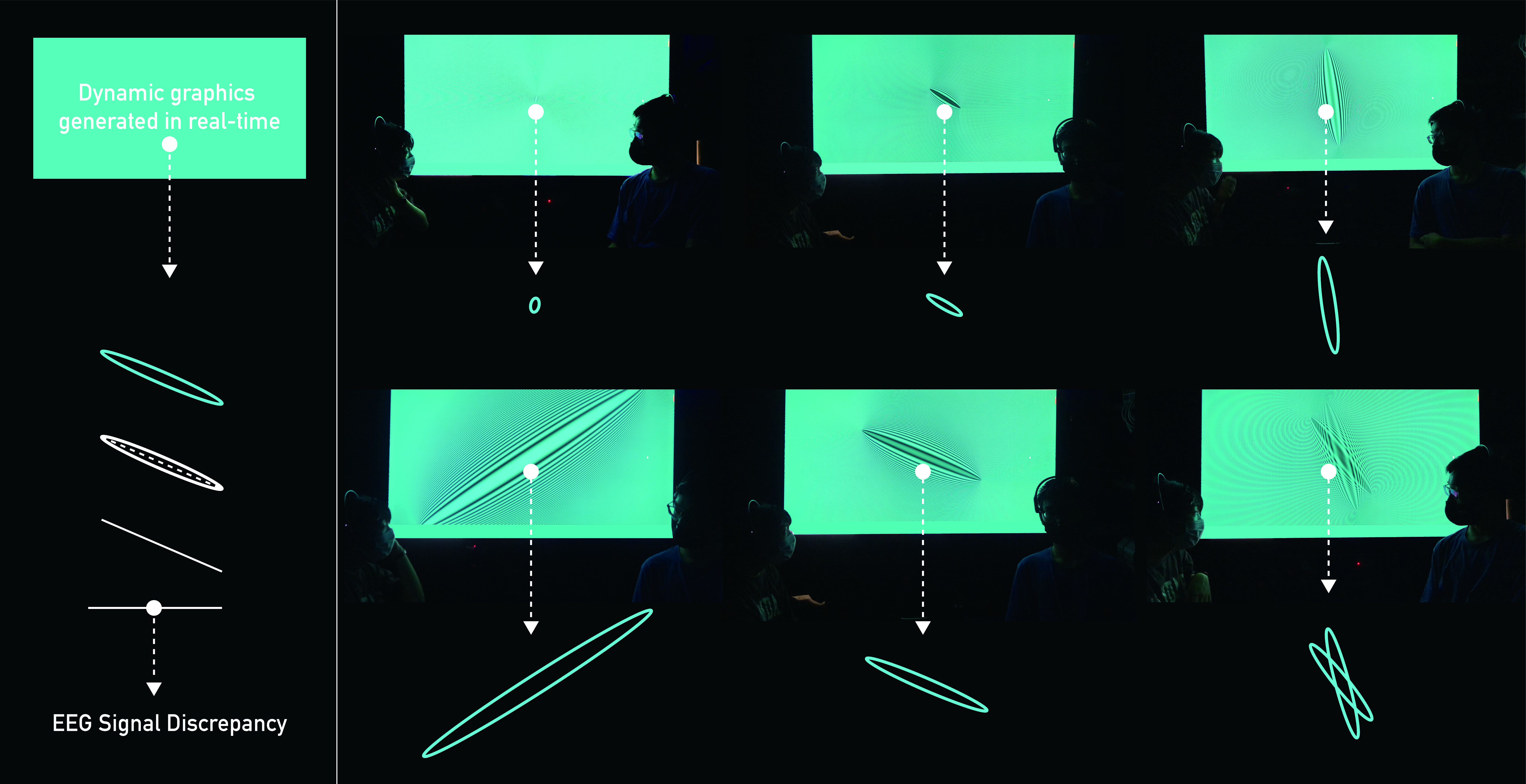
Visualizing the Electroencephalography Signal Discrepancy When Maintaining Social Distancing: EEG-Based Interactive Moiré Patterns
In the context of the COIVD-19 pandemic, everyone is required to maintain social distance in the public. We have lost the way to perceive each other through “distances” in public places. However, “distance” is an essential factor in communication that can’t be ignored, like “facial expressions” and “body movements”. This paper reflects on the current fixed “social distancing” in a particular context. The innovative point of our research is to detect and calculate the differences in brainwave signal data between two people and visualize the differences through programmed 2D moving images. In terms of the research process, first, we explored a new way of interaction, using brainwave signals to express “distances” and Moiré patterns as visual representations. Then we wrote an algorithm to generate the dynamic responses of the Moiré patterns to different stimuli in real-time to represent the concepts of distances and visualize people’s reactions. Finally, we developed an interactive device to imagine “electroencephalography (EEG) signal discrepancy” to perceive the “distances” in social situations. Nowadays, online meetings, classes, etc., are becoming more and more popular, and the distances between people in virtual spaces will be more ambiguous. In light of this, we plan to explore the visualization of electroencephalography (EEG) signal discrepancy in remote communication to enhance people’s perceptions of each other in the future.
COIVD-19のパンデミックの中で、誰もが公共の場で社会的距離を保つことが求められている。私たちは、公共の場において「距離」を通じてお互いを認識する方法を失ってしまったのです。しかし、「距離」は「表情」や「体の動き」と同様に、コミュニケーションにおいて無視することのできない重要な要素である。本稿では、現在固定化されている「社会的距離感」について、ある特定の文脈で考察している。本研究の革新的なポイントは、2人の脳波信号データの差異を検出・算出し、プログラムされた2次元動画像によって可視化することである。研究プロセスとしては、まず、脳波信号で「距離」を表現し、モアレパターンを視覚表現するという新しいインタラクションのあり方を模索しました。次に、異なる刺激に対するモアレパターンの動的な再応答をリアルタイムに生成するアルゴリズムを書き、距離の概念を表現し、人々の反応を可視化しました。最後に、社会的な状況における「距離」を知覚するために、「脳波信号の不一致」を想像するインタラクティブな装置を開発しました。昨今、オンラインでの会議や授業などが盛んに行われるようになり、仮想空間における人と人との距離感はより曖昧になることが予想されます。そこで、今後は遠隔コミュニケーションにおける脳波信号の不一致を可視化することで、人々の相互認識を高めることを検討していく予定です。
Project Member: Jingjing Li1, Ye Yang2, Zhexin Zhang1, Yinan Zhao1, Vargas Meza Xanat1 and Yoichi Ochiai1 / 李晶晶1、杨叶2、張哲新1、趙一楠1、Vargas Meza Xanat1、落合陽一1
1 Library and Information Media, University of Tsukuba, Tsukuba, Japan / 1 筑波大学図書館情報メディア系,日本,つくば
2 College of Design and Innovation, Tongji University, Shanghai, China / 2 同済大学,中国,上海市
Contact / 連絡先:li@digitalnature.slis.tsukuba.ac.jp

